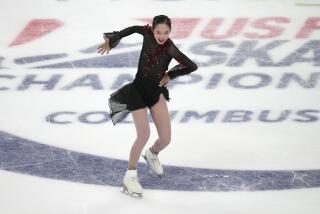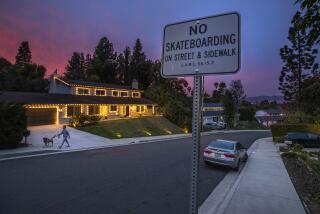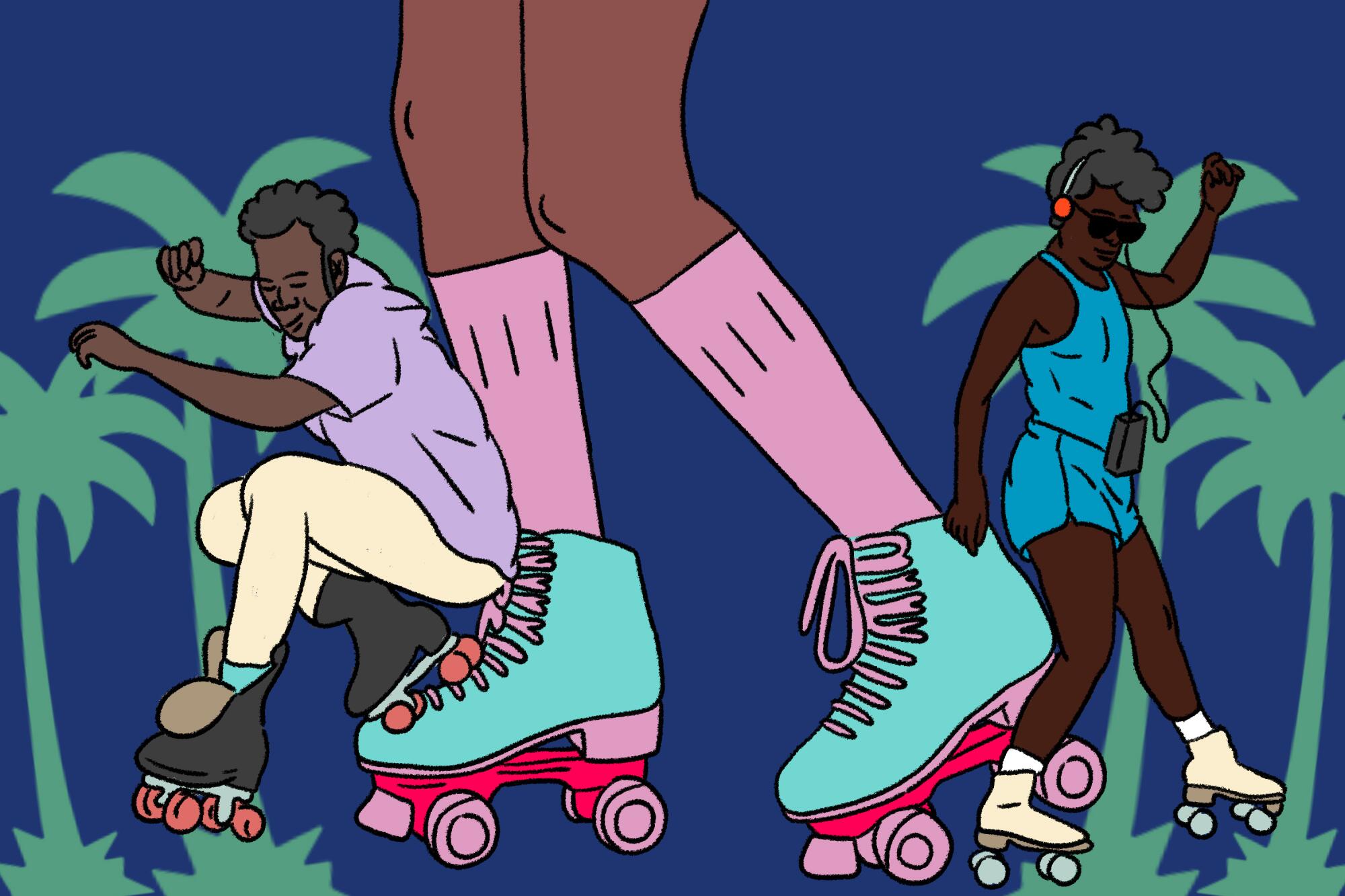
Some people turned to sourdough. Others became plant parents. My quarantine hobby of choice? Roller skating.
In the early months of the pandemic, roller skating was suddenly everywhere on TikTok and Instagram, bite-size clips of beautiful and carefree-looking skaters gliding gracefully down palm tree-lined streets, overrunning my feed. But it was the video of Berlin skater Oumi Janta that pushed me over the edge.
In the 50-second viral video, Janta grooves on skates to house music, effortlessly smooth and completely unbothered. As I watched the clip over and over, I realized I had to do that too. Or at least try to learn. After being cooped up for months, missing my favorite dance studios and feeling totally despondent about the state of the world, I was desperate for something joyful in my life.
So in early July, I set out on my roller skating journey — and quickly learned that during the pandemic, the first hurdle to learning how to skate is actually finding them.
After seeing roller skaters on her social media feeds, arts reporter Makeda Easter decided she had to try it out for herself.
The popular outdoor skates — vibrant, multicolored Moxis, Impalas, Sure-Grips — were sold out online and on back order for months. Long Beach-based Moxi has temporarily suspended sales of its most popular adult skates to catch up on back orders.
After stumbling across a tip to check local shops, I began frantically calling around town before finding a pair in my size at a skate shop in South Gate.
Elated, I picked up my skates, drove home and tested them out almost immediately, skating around and around in circles in my apartment garage. It didn’t take long for the garage circles to become boring though. YouTube became my guide as I binged tutorials on the basics of stopping, skating over uneven surfaces, conquering hills, dancing specific steps — so many tutorials.
I wasn’t starting from scratch. One of my first skating memories was moving to the Spice Girls and to Coolio’s “Gangsta’s Paradise” at a New Orleans rink in elementary school. In middle school, one of my favorite summer activities was going to the rink in my Houston suburb. And a few years ago, I rediscovered my love of skating at L.A.’s World on Wheels, which felt like stumbling into the universe of the 2005 film “Roll Bounce.”
Social media eventually led me to Sista Skaters, an L.A.-based group of Black and brown women that offered virtual lessons via Zoom. For a few weeks every Sunday morning, I made the 10-foot trek from my apartment to my garage, awkwardly positioning my phone on the ground so the teacher could watch my form and offer tips on skating basics like bubbles — the beginning step to skating backwards — crossovers and balancing on one foot (all while desperately hoping a neighbor wouldn’t appear).
The lessons gave me a small boost of confidence, and I soon began playing detective, hunting for larger outdoor spaces — skate parks and empty parking lots — where I could practice and get slightly closer to my dream of being able to turn on some music and freestyle without falling.
My skate adventures weren’t always a win.
There was the time I showed up to a North Hollywood skate park, decked out in purple tie-dye with my roller skates slung over my shoulders, only to realize the park was full of skateboarders, which was totally intimidating. I was too nervous to put on my skates. Another time, while I was working on spins at a basketball court, my body lurched in the wrong direction, all my weight crashing onto my right elbow.
The more I skated though, the more I became fascinated with the culture of roller skating in L.A. And as uprisings continued across the country, I began paying more attention to the juxtaposition of joy and protest. Across social media, there were Black skaters educating their followers on the whitewashing of the art form and skaters channeling their pain into organizing Black Lives Matter solidarity meetups and protests.
I wanted to dig further into this unique history of Black skaters.
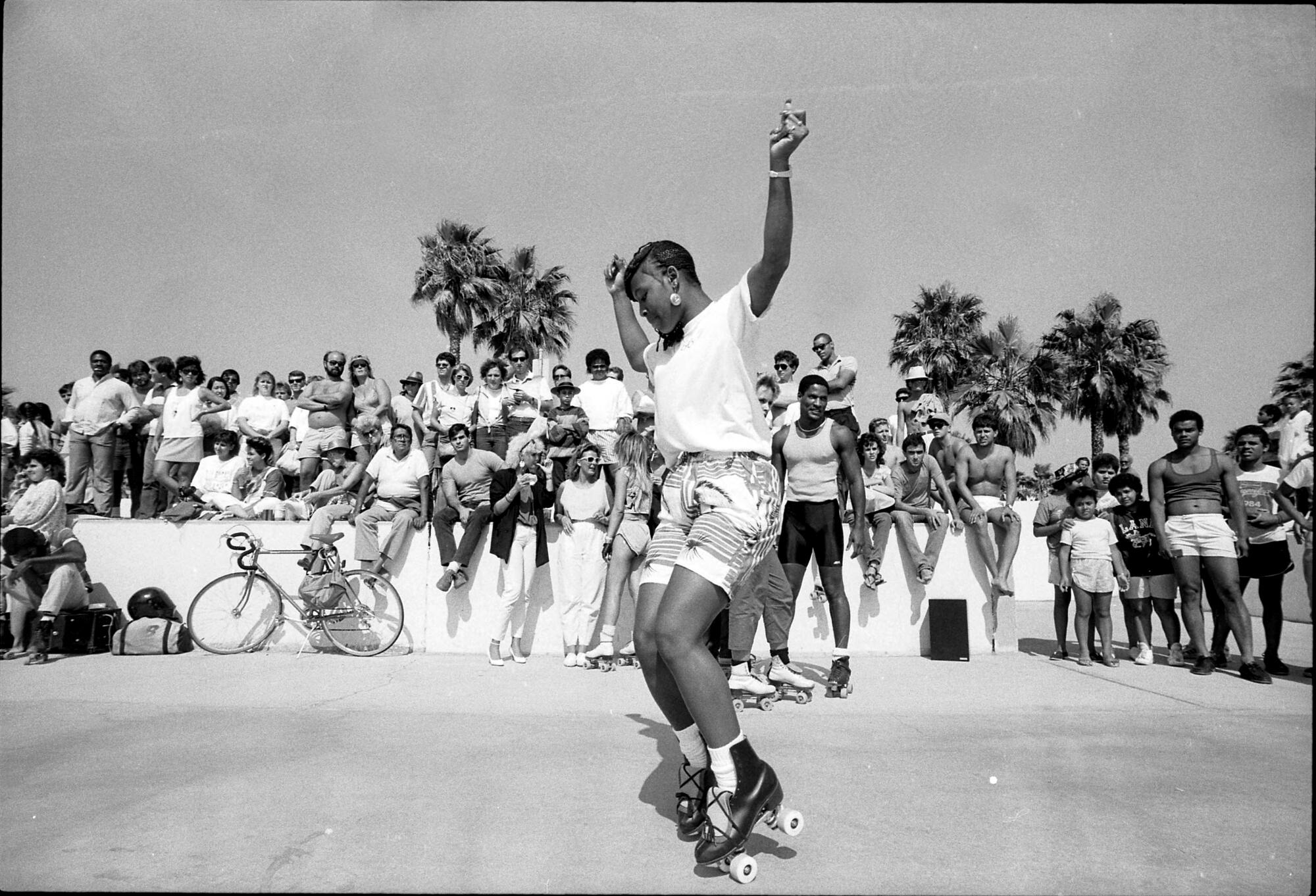
For some, the thought of roller skating conjures an image of old-school white hippies drifting down a bohemian beach boardwalk. But much of roller skating culture is distinctively Black.
In the 1960s, Black skaters protested segregation at rinks with “skate-ins.” In 1963, 27-year-old Ledger Smith, nicknamed “Roller Man,” skated from Chicago to Washington, D.C., over 10 days wearing a sign that said “Freedom.” He skated nearly 700 miles to witness Martin Luther King Jr.’s “I Have a Dream” address at the March on Washington for Jobs and Freedom.
The Oakwood section of Venice, until the 1970s a predominantly Black community, once was the only neighborhood on the Westside that welcomed Black people.
In the mid-1970s, Venice Beach became a haven for the iconic skate dancers, a majority Black group of performers who entertained crowds for decades with their blend of skating, break dancing, fancy footwork and original choreography.
I met James Rich, one of the original Venice skaters, at an outdoor skate meetup on the Westside. Rich, whose nickname is “BuckWild,” began skating with the Venice group as a teenager around 1980.
“I was from the hood, born and raised. I was going towards gangs, I was going towards drugs,” he told me. Roller skating “is what saved my life.”
The group practiced nearly every day, eventually attracting the attention of Hollywood in the mid-1980s. Roller skating took Rich around the world and landed him gigs in commercials and music videos. But Hollywood depictions of the skate dancing scene, like in the 1980 film “Xanadu,” were often whitewashed.
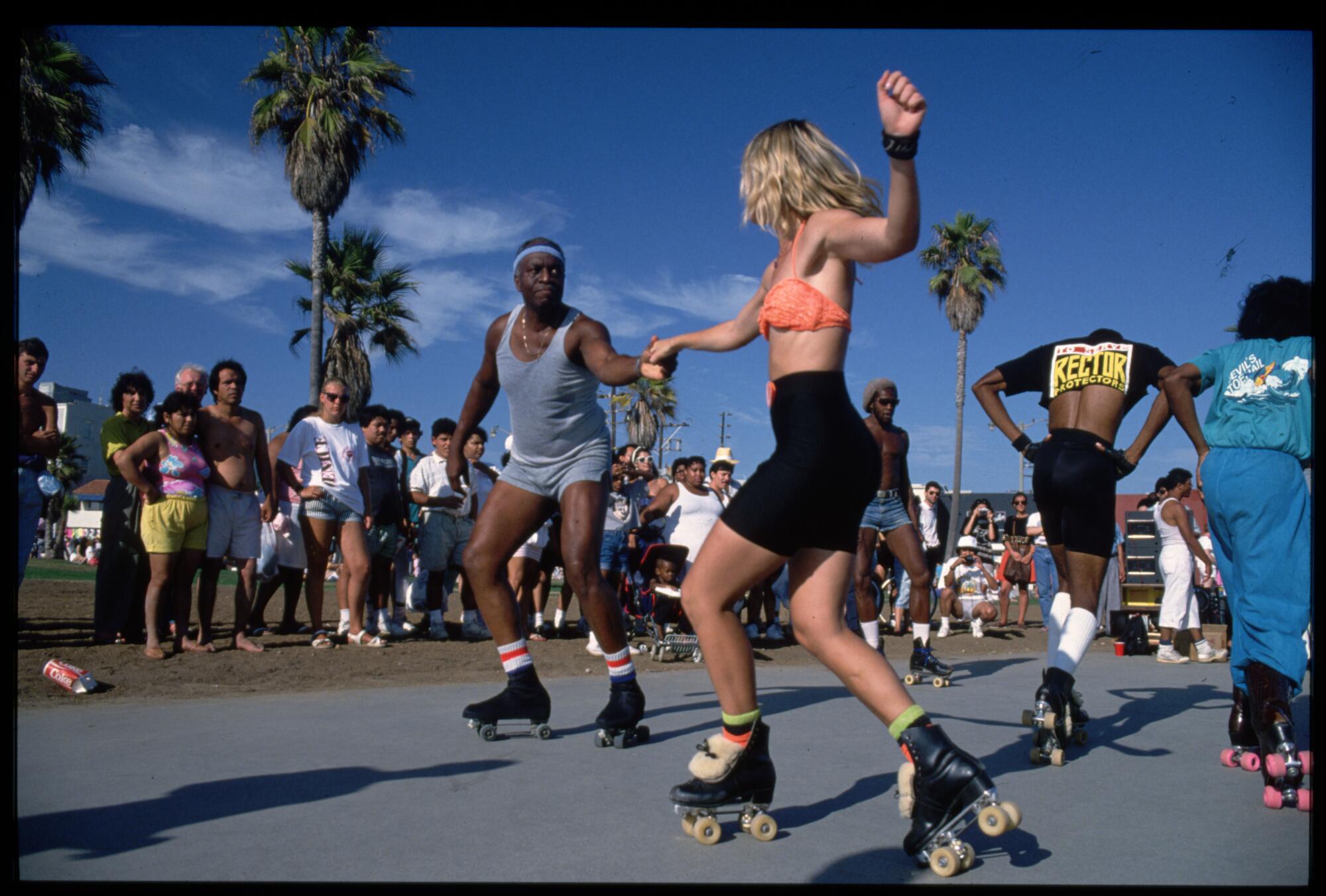
The group — whose story is the center of the 2017 documentary “Roller Dreams” — persevered through gentrification in Venice and continues to meet regularly today.
In the 1980s, roller rinks like Compton’s Skateland and Mid-City’s World on Wheels became a hotspot for up-and-coming hip-hop artists, including Queen Latifah, N.W.A and Dr. Dre. The rinks were also safe havens from gang violence in South L.A.
But these historic indoor rinks are dwindling. Their plight and that of other Black rinks is chronicled in the 2018 documentary “United Skates.” Skateland closed in 1988, World on Wheels briefly closed in 2013, reopening four years later with financial support from rapper Nipsey Hussle.
In the ’80s and ’90s in L.A., if you were a teenager, World on Wheels was the hottest club in town.
Roxy Young, who’s been skating for 12 years, said the Cerritos rink Skate Depot was her haven until it closed in 2014. She told me that in California, indoor skaters are known for dancing, couples skating and their Stacy Adams boots fitted with tiny wheels, which help with gliding and maneuverability — perfect for executing complicated moves.
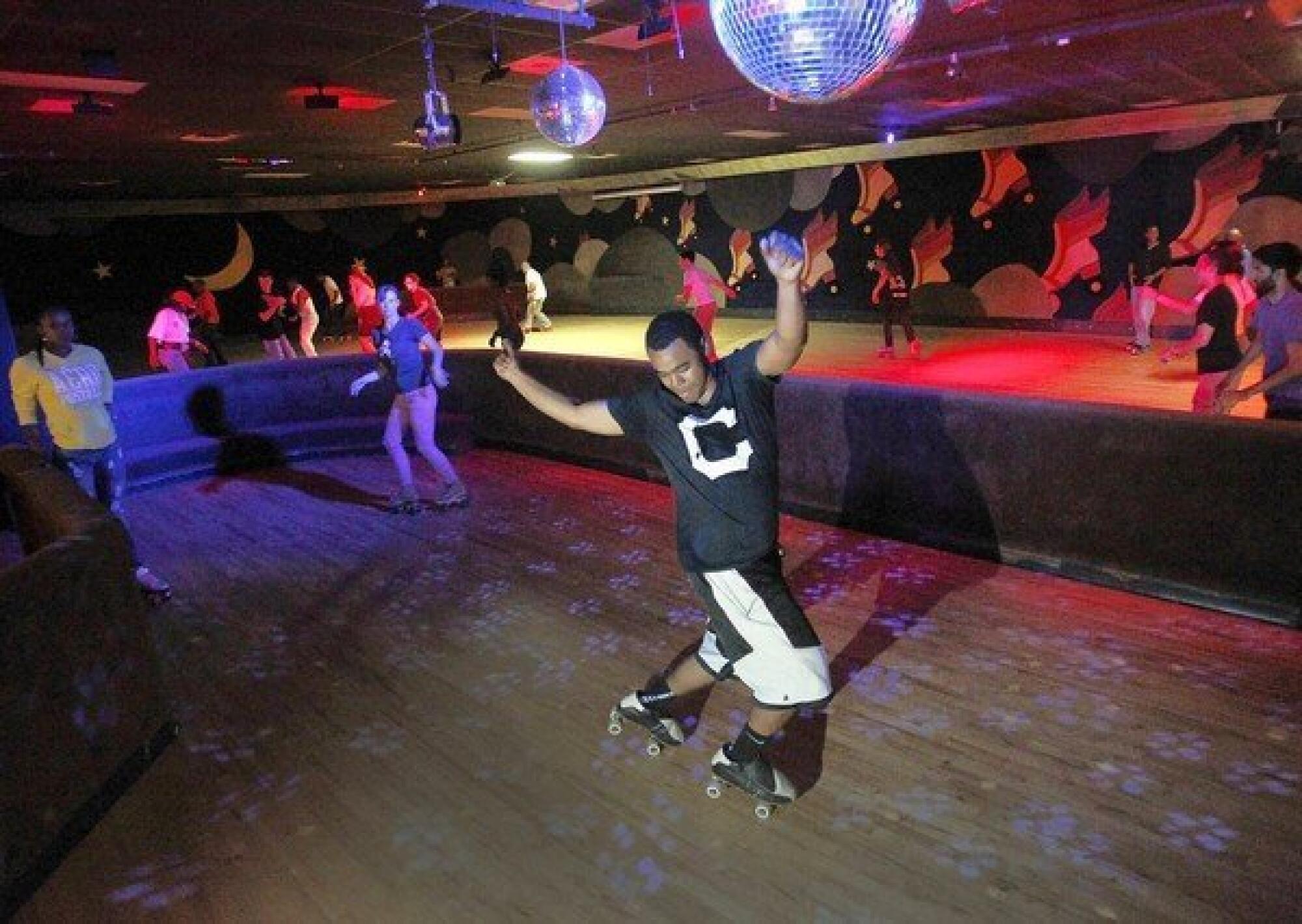
During the pandemic, Young, like many other indoor skaters, have had to transition to the outdoors.
Looking to create community and continue her own form of skate therapy, Young began organizing outdoor skate meetups for adults and children in an empty parking lot in Bellflower.
Rich and Young said although social media may make roller skating look like it’s “back,” it’s far from the latest trend. For many Black skaters like Young, whose grandmother, mother and now children skate, roller skating never went away.
As an L.A. transplant, learning to skate and spending time with Black skaters in particular has made me feel more connected to this city and to a unique culture and style — one that has been popularized by social media but whose origins are not always properly acknowledged.
“We haven’t left,” said Rich, who has skated for more than 40 years. “We’ve been skating in Venice since Day 1. We never stopped doing it.”
It’s hard to say why exactly roller skating has become so popular during quarantine. But if I had to guess, it’s an inclusive and joyful activity that’s perfect for these heavy times. For the most part, it also feels like a safe outdoor activity. Health officials might shake their heads, but many skaters attend meetups conspicuously mask-free. (I still mask up outdoors unless I’m skating alone.)
Rich and Young have enjoyed seeing all the newcomers find a love for skating during the pandemic, but they hope renewed interest will help save roller rinks or bring more attention to Black skaters who have been doing the work for years.
Passionate about skate education, Rich also hopes newbies take time to learn from experienced skaters in person, rather than relying exclusively on online tutorials.
It was a lesson I learned while trying to conquer a move called the Downtown, a roller-skating line dance vaguely similar to the Cha Cha Slide. At a basic level, the move is a simple grapevine, but made way more complicated by balancing on eight wheels.

Online tutorials teach the move with an exaggerated step over, step behind, push, push — but that looks nothing like the smoothed-out version groups do to music. I was struggling to make the transition between clunky steps until I went to an outdoor meetup.
Seeing that I was having a hard time, two skaters rolled over and gave me tips. Mesmerized, I watched their feet over and over again, until something started to click.
I was almost ready to join the group.
More to Read
The biggest entertainment stories
Get our big stories about Hollywood, film, television, music, arts, culture and more right in your inbox as soon as they publish.
You may occasionally receive promotional content from the Los Angeles Times.



